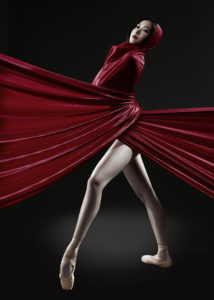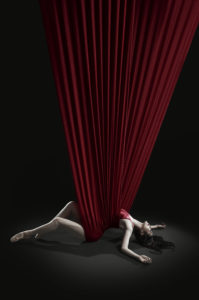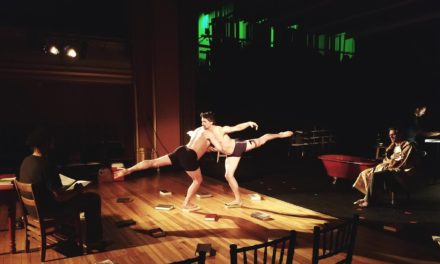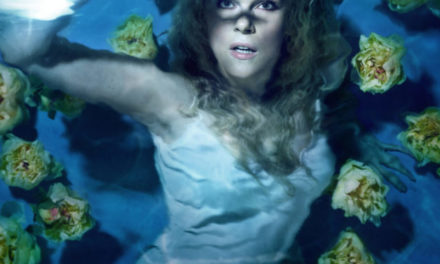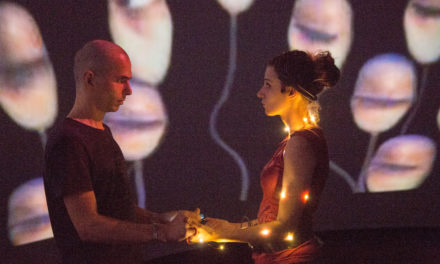Choreographer Ricky Hu Songwei boards a bus in Shenzhen bound for Hong Kong every day. During that time, you might see the slight man softly tapping out a rhythm. He might sit with his eyes closed intently, not asleep, but dreaming. You might even see him, in a more tender moment, weep, or at least wipe a tear or two away.
A two-hour commute is something most of us complain about. For Hu, it’s a place to get inspired and ideate. A chance to get emotional.
“You need that,” he says, “for what we do.”
Hu is a rising star at the Hong Kong Ballet. Born in Jiangxi, China, Hu studied at the Shanghai Dance School and the Hong Kong Academy of Performing Arts and joined the company in 2008. The “we” he refers to is himself and his collaborator Yuh Egami, the chatty choreographer sitting across from him in a quietened rehearsal room in Hong Kong Ballet’s headquarters in the Tsim Sha Tsui’s Cultural Centre. The only other noise is the whisper of a lone dancer flexing in her pointe shoes. Egami was born in Okinawa and trained at London’s Royal Ballet School before coming to the company in 2002.
What this duo do, increasingly successfully, is create bold, modern, ballet. Their first collaboration, White Lies, in 2012, was called “ambitious and stylish” by the South China Morning Post, and their work on 2013’s quirky A Frog Prince – A Ballet Chinois and 2014’s Horn featured flamboyant costumes and creative choreography. In 2015, their 20-minute Bolero, a piece set to the French composer Ravel’s famous 1928 work, drew even more praise. Inspired by its driving, repetitive score, Hu and Egami set their story in a lunatic asylum and haunted the principal dancer with a cast of demons that appeared and re-appeared from within a large metallic cube. The piece won Outstanding Ensemble Performance at the 2016 Hong Kong Dance Awards.At the time, the two choreographers said that they were nervous taking on a well-known work like Bolero, which comes accompanied with such a huge reputation. Now they are readying themselves for something even bigger.
Their latest production will be the company’s debut of Carmen. Since opening in 1877, the opera by Bizet has endured, becoming one of the most famous of all time. The story, based on a novella by dramatist Prosper Mériméeis, is about a Spanish soldier named Don José, who loses his heart to a wild gypsy girl named Carmen, who rejects him for the bullfighter Escamillo. It has also been made into a film and a ballet.The choreographers were “terrified,” they say, when learning of artistic director Madeleine Onne’s suggestion to put on Carmen. Yet Onne had faith in their ability, giving them free reign to create anything. The choreographers are clearly embarking on a new tour-de-force. With 28 dancers, and a running time of 40 minutes, numbers have doubled since their version of Bolero, but like that show, the dance is planned to be taut, fluid, and ambitious.Their version uses eight of 12 tracks taken from Rodion Shchedrin’s
Their version uses eight of 12 tracks taken from Rodion Shchedrin’s Carmen Suite, a ballet first performed at the Moscow Bolshoi Theater in 1967, where Carmen was danced by the ballerina Maya Plisetskaya, Shchedrin’s wife. Shchedrin’s Carmen Suite modernised Bizet’s original Carmen, using some of its form but merging exciting rhythms for strings and lots of creative percussion that really built dramatic tension and shaping the story for dance. At the time, the Soviet Union’s Minister of Culture banned the production, saying it was insulting to Bizet, but it has since been staged across the world. “We loved the music, and that became our starting point,” says Egami.
This post was written by the author in their personal capacity.The opinions expressed in this article are the author’s own and do not reflect the view of The Theatre Times, their staff or collaborators.
This post was written by Zolima CityMag.
The views expressed here belong to the author and do not necessarily reflect our views and opinions.





